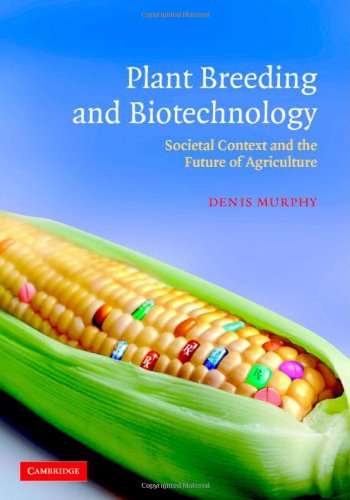By Klaus Ammann,Yolande Jacot,Richard Braun
Read or Download Methods for Risk Assessment of Transgenic Plants: IV. Biodiversity and Biotechnology: Biodiversity and Biotechnology No. 4 PDF
Similar biotechnology books
Plant Breeding and Biotechnology: Societal Context and the Future of Agriculture
This entire 2007 survey of recent plant breeding lines its heritage from the earliest experiments on the sunrise of the medical revolution within the 17th century to the current day and the life of excessive tech agribusiness. Murphy tells the tale from the viewpoint of a scientist operating during this box, providing a motive and evidence-based perception into its improvement.
Biohydrogen Production: Fundamentals and Technology Advances
Biohydrogen construction: basics and expertise Advances covers the basics of biohydrogen construction expertise, together with microbiology, biochemistry, feedstock requisites, and molecular biology of the organic hydrogen construction strategies. It additionally provides perception into scale-up difficulties and boundaries.
This e-book provides an outline of the present kingdom of analysis within the box of nanotechnologies and biotechnologies for strength, atmosphere, electronics, and healthiness, as rising from top laboratories world wide. It offers and describes intimately the new study ends up in the main complex nanobiotechnology-based tools and their attainable purposes to power, surroundings, electronics, and public health and wellbeing.
Computational Biology and Bioinformatics: Gene Regulation
The advances in biotechnology akin to the subsequent new release sequencing applied sciences are taking place at breathtaking pace. Advances and breakthroughs supply aggressive merits to people who are ready. in spite of the fact that, the driver in the back of the optimistic festival is not just constrained to the technological development, but in addition to the significant other information analytical abilities and computational tools that are jointly referred to as computational biology and bioinformatics.
- Protein Moonlighting in Biology and Medicine
- Boar Reproduction: Fundamentals and New Biotechnological Trends
- Biologically Modified Justice
- Sensing, Signaling and Cell Adaptation: 3 (Cell and Molecular Response to Stress)
- Polar Oceanography: Physical Science: 002
Additional info for Methods for Risk Assessment of Transgenic Plants: IV. Biodiversity and Biotechnology: Biodiversity and Biotechnology No. 4
Sample text
